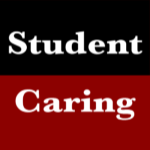The ability to communicate clearly is essential for everyone, in every profession. Writing, however, is about more than communication. It’s about critical thinking, the formulation of ideas, and the process of learning itself.
Writing should be used as a tool to elevate a student’s understanding — not a request for them to regurgitate quotes from course books strung together with a thesis and liberal application of furthermore, however, in contrast, thus and therefore.
Writing is the vehicle that carries students to higher learning, and taught in creative ways, allows them to engage with core concepts using their own unique perspective. This is where teaching becomes learning, where material is applied instead of memorized.
A solid background in how to write and argue effectively prepares students for life far beyond their academic careers. More and more businesses rely on persuasive writing in communication with customers, clients, and internally between departments, as adoption of technology connects people from further apart physically.
Occasionally, Risk Shaking Off Secondary Sources
Secondary sources are often vital to unpacking and examining course content. Many topics require a social, scientific, or historical context that can only be gained from secondary sources from experts in the field. When students are writing, however, they can easily become a crutch, which students can safely use to cobble together ideas that aren’t, in the end, their own. Putting together an essay based on the conclusions of other academics is not necessarily the best way to get students to truly engage with the tools they’ve been given.
This can depend greatly on the topic. Argumentative essays are often made stronger by the use of secondary analysis and opinion to defend and critique. On the other hand, this is not always the case. Some arguments are best made on the premise of raw data alone.
That isn’t to say they should be abandoned. One project is all it would take. One project where students only have primary sources available to them, and must use the tools they’ve been given to draw their own conclusions free from the influence of analysis by other academics. If they know the course material, their responses are likely to match established consensus, or even build upon it. The difference will be they came upon their conclusions independently. That’s where the best learning occurs.
Analysis of primary data is becoming an increasingly important skill in today’s connected world, where it’s becoming increasingly difficult to identify credible sources of information.
Teach Creative Writing Alongside Argument
Academic writing has a reputation for being dry and boring. Isn’t our goal to disseminate information? Choosing not to teach creative ways to express complex ideas is a great failure. Creative writing isn’t just for literature classes.
Writing for the layman should be a requirement of any complex field. Effective communication of art, history, science, and all topics of public interest are vital for bridging the gaps between people with knowledge and people with the potential to learn. Teaching students to use creative techniques when they communicate is about turning them into teachers who will engage and motivate members of the public about important issues.
Learning Should Not be Separated From Passion
Everyone has issues they care about, be they social, political, environmental, or cultural. Teaching writing and effective argument can also teach students how what they learn can be applied to the world around them for change they want to see.
Finding a personal connection in course material is a powerful motivator for learners, and it encourages them to think beyond learning, to think about application. Teaching students how to knowledgeably write about their own bias and experience shouldn’t be something we shy away from. Their personal connection to the material is what will drive them to greatness.
No knowledge exists in a vacuum, and teaching students to put their experience and bias into perspective is better than teaching them how to remove passion from their work. So teach students to write about themselves, about their histories, cultures, and identities. Show them how what they are learning connects to who they are, and then show them how to acknowledge that experience with integrity when they write about academic topics.
Writing is a deeply personal activity. Let’s shake off the chains of this idea that academic writing is boring, impersonal, and out of touch.

0 Comments